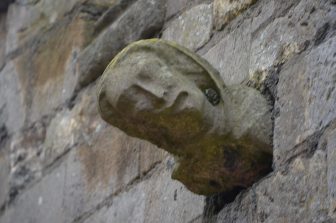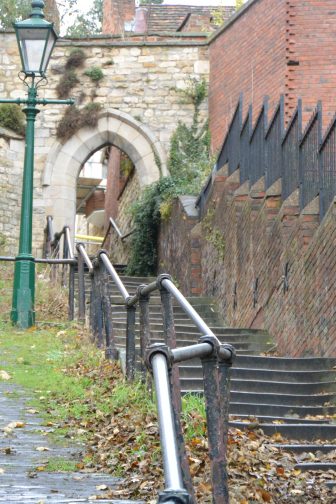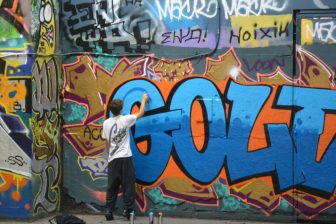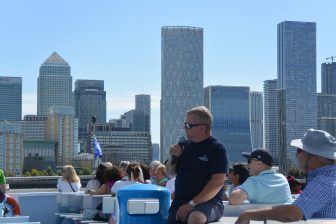
[ Nov.2018 ] On our second day in Lincoln in the middle of England, we walked in the town according to the suggestions of our guidebook, which we had bought the day before from the tourist office.
The name of the book is ‘Lincoln Walking Guide’ and the staff at the tourist office recommended it, saying “This has got the details of the city’s history”.
The 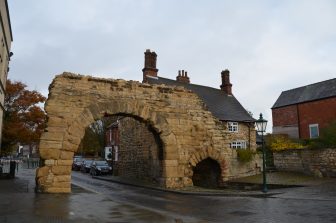 book introduces four different walking courses and we found that our hotel was in the middle of Walk One, so we started from there onward.
book introduces four different walking courses and we found that our hotel was in the middle of Walk One, so we started from there onward.
The first thing we saw was a stone arch near the hotel, which I had noticed the day before.
This was originally the north gate during the Roman era and its name is Newport Arch.
Even now, the cars go through this arch to get into the old town.
It did not look big, but according to the book, in the Roman era the road used to be 2.4 metres lower than it is now, so the gate would have been much taller.
As the book suggests, we turned right before the gate.
After a while, we saw some Roman ruins, which I would not have noticed if I did not have this book, as a part of the city wall and East Gate.
The next thing we saw was the remaining wall of the medieval Deanery from the 13th century.
It was an ordinary wall, but in the middle of it, there was a carving of
According to local folklore, this is the head of the wife of the dean and she is waiting for him to come back from the Swan, the nearby pub.
Turning on to James Street, there is the building of the Minster School of the 13th century.

It was a typical English cloudy morning and the grey sky, the autumn colours and old houses were matching very well in a quiet way, so we took a lot of photos.
After that, we went back to the same street to get to the point where we could see the back of the Cathedral.
Here, there was another gate, called Priory Gate, built in 1815.
In the lawn of the Cathedral, there is a statue of Alfred Tennyson, the 19th century poet.
Apparently, he was born in Somersby, which is about 40 minutes east of Lincoln by car.
Up to around here, we walked without any problems, but now the cold rain started and my husband, who is easily affected by the cold, nearly stopped functioning.
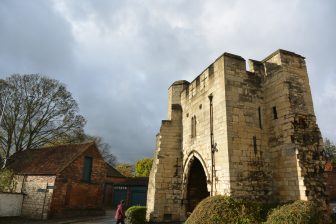
On the way down the slope, another arch caught my eye.
This is called “Potter’s Gate” originally built in the 14th century and restored in 1884, according to the book.
There are so many gates in this town.
We kept going down the hill and reached the point where the book says there are ‘excellent views across the valley’, but because of the weather, the view was not special, unfortunately.
A bit further down, we turned into a side street and started going up again.
This time, it was not a slope, but steps, called Greenstone Stairs.
Apparently, these steps have linked the suburbs and the uphill city since the 12th century.
But probably because they have rebuilt the steps many times, it was easy to go up there.
There was another arch on the way, too.

